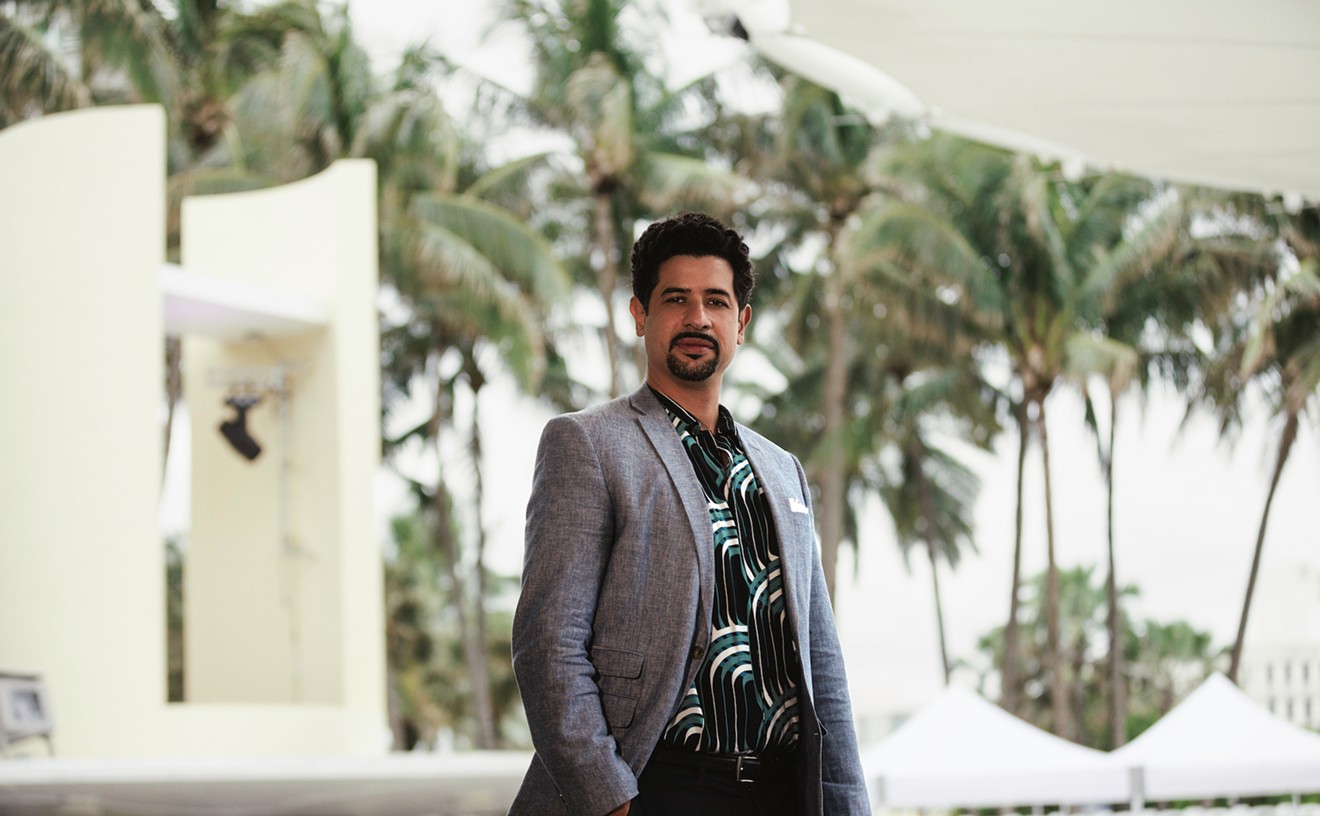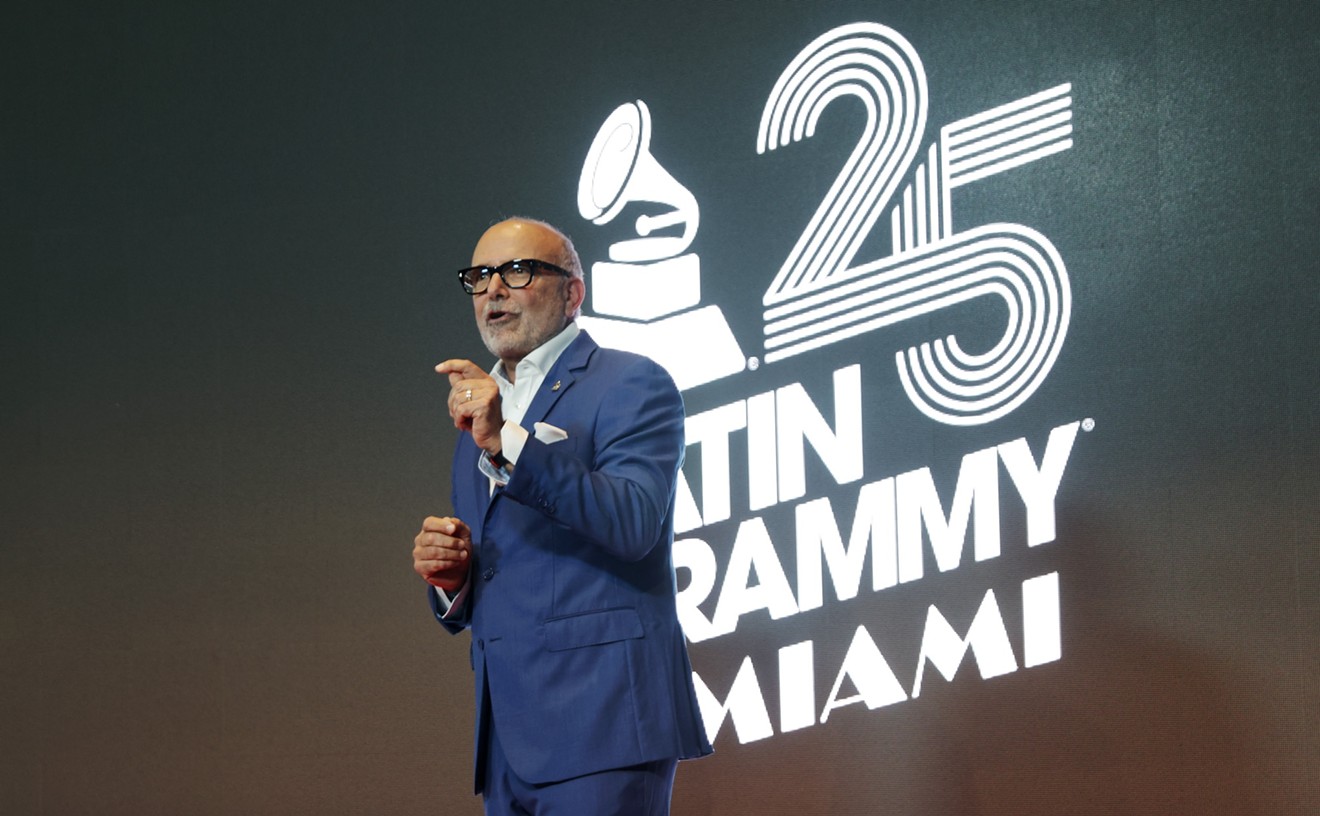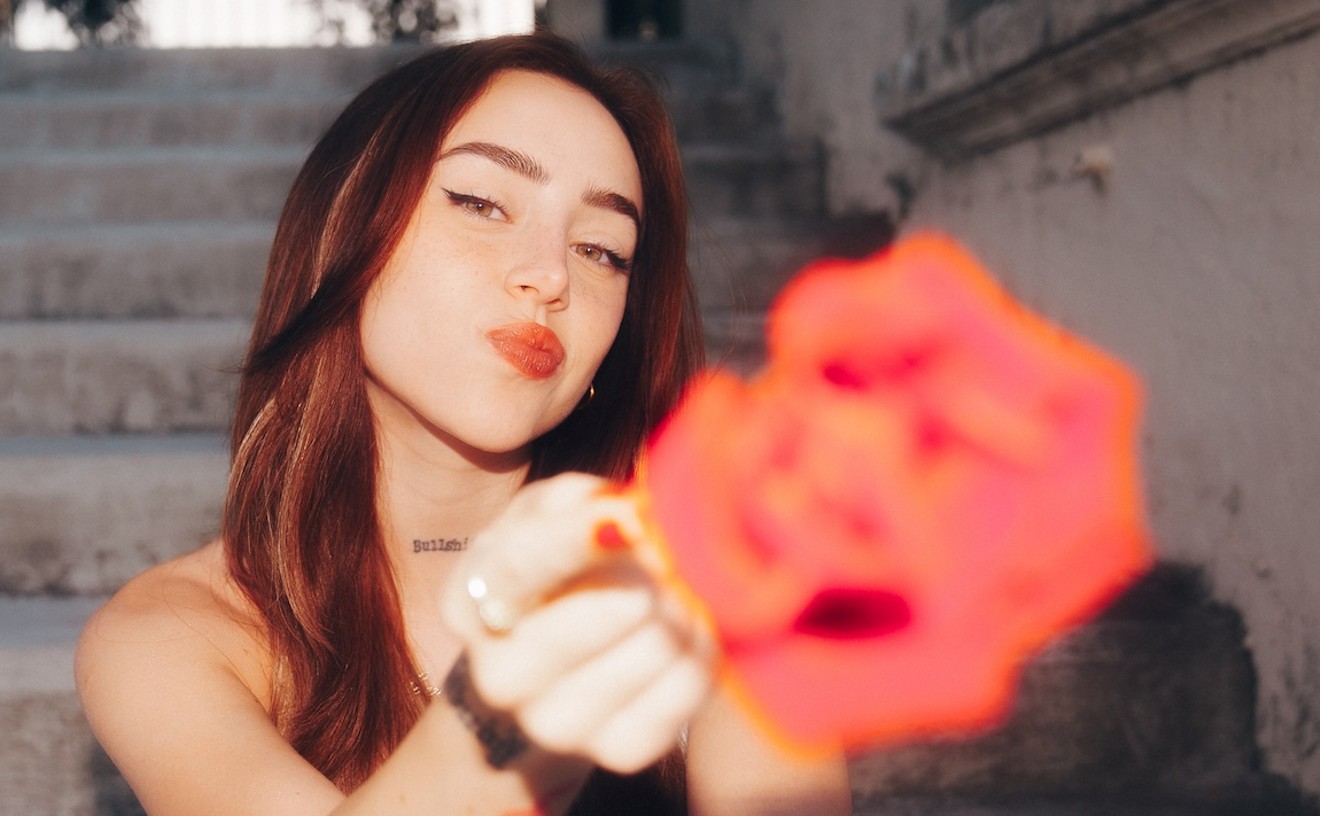The Music Bridges project brought American and Cuban musicians together for a week, in the rooms on one floor of the hotel, to write collaborative songs, and later to perform them in a mind-numbing three-hour concert at the Karl Marx Theater. Although the show was ultimately disappointing, the musical exchange remained a groundbreaking event, bringing more American artists to Havana at once than at any other time in the 40 years of Fidel Castro's reign. The meeting gave the Americans a peek into the unknown, and it let Cubans rub elbows and trade riffs with some of their pop idols (and others they'd never heard of).
"This is tremendous," said legendary Cuban piano player Chucho Valdes. "It's an exchange between two musical powers." But for Valdes (and probably for everyone, given the mediocrity of the resulting music) the event's import was best seen as a symbolic one. Valdes had hoped to work with Bacharach, but in a lottery the artists held at the beginning of the week, the Cuban jazz powerhouse was paired with Loeb. He politely begged off, citing a gig in Boston the night of the Music Bridges concert. Instead he played with his group Irakere at a party for an event at the American consul's mansion. Famed jazz sax player Gary Bartz sat in, adding some crosscultural sparks.
For several days it was hard not to trip over television equipment while strolling the Nacional's seaside gardens. More than 200 print journalists and TV crews were present for the event, including a handful from Miami. Most had been dispatched to also cover the historic baseball game between the Baltimore Orioles and Cuban players.
Although Music Bridges was supposed to encourage communication, the organization seemed determined to rigidly define the scope of any conversation. Several artists said they had been told by Music Bridges' founder Alan Roy Scott not to discuss politics during interviews, in order to maintain the event's image as purely a friendly cultural exchange.
"Anything to do with Cuba is political," scoffed Me'Shell NdegeOcello, who was so disgusted with what she viewed as the organizers' condescending treatment of the Cuban musicians that she considered wearing a "Fuck America" T-shirt to the concert. She didn't, but other artists used the occasion to air their opposition to the U.S. embargo against Cuba. Onstage Michael Franti, a spoken-word poet and leader of the San Francisco band Spearhead, was moved to tears by his frustration with America's Cuba policy. "Viva Cuba libre!" shouted Bonnie Raitt at the concert, probably unaware she had just uttered a popular conservative Cuban exile slogan. Raitt also took constructive action, bringing with her donations of 37 guitars and a load of medicine. Other members of the Music Bridges delegation were spotted handing bags of aspirin and soap to their Cuban translators. Some musicians, however, displayed no such solidarity with Cuba, because they knew nothing about the people or the place.
"I couldn't have found Cuba on a map," admitted Montell Jordan, a hot young R&B performer and songwriter who co-wrote the current Top 10 hit "Nobody's Supposed to Be Here." "But there's a difference between ignorant and estupido," he said. Like other American participants, Jordan was learning fast about the musical prowess of the Cubans. He also thought it best not to flaunt the huge diamond-encrusted medallion he sports on a thick gold chain in front of musicians who told him their state salaries were $17 per month. Eager to immerse himself in the local customs, Jordan promptly bought a case of rum and boxes of cigars in the hotel gift shop. His education continued at a Los Van Van concert attended by the Music Bridges artists, where he downed a glass of straight Havana Club and got so drunk he couldn't stand up.
"I Feel Better than James Brown," a track on the 1990 Was (Not Was) album Are You Okay? says: "I was attending Mardi Gras with Fidel Castro." For Don Was, the leader of that band, and for most Americans, Cuba has always held a mysterious cachet, and Music Bridges was little more than a good excuse to visit the island. "Just the fact that we're forbidden to come here makes it more extravagant," Was said, mumbling into his double-espresso breakfast just before heading off with other musicians to the Orioles-Cuba game, held the same Sunday as the concert. "I'm just a dope like anyone else. Tell me I can't go there and I'll say 'Good! When can I go there?' You probably could have brought me to St. Martin and told me it was Cuba," he admitted. "But I'd have seen a McDonald's eventually. It's nice to be in a city like Havana that's not loaded up with billboards and frozen-yogurt stands and fast food restaurants, but that won't last long.
"Things like [Music Bridges] didn't happen two years ago so it's a step of some sort. Is it a good step? It's good that these Cuban musicians are exposed to people outside of the island. Am I down here as the harbinger of McDonald's? I somehow feel like that."
NdegeOcello was more concerned about what she viewed as the "ugly American" side of the Music Bridges. "I was never so embarrassed in my life," the critically acclaimed bassist/singer said. NdegeOcello walked out of a rehearsal in which Mark Hudson, a songwriter who served as musical director for the concert, continuously referred to the Cubans on hand as "Spanish people" or "Spaniards," and often assigned them as mere back-up musicians for the Americans. When Hudson didn't have a translator, he attempted his own version of Spanish by adding an o to every word, as when he announced over a loudspeaker that Cuban musicians "returno their borrowed gearo right away-o."
NdegeOcello and others were also appalled that Ray Scott instructed them to stay in the hotel and not explore Havana on their own, incredulously claiming their visas didn't allow them to wander the streets. Only a handful of the 36-member contingent disobeyed, including NdegeOcello. She spent time in a house in Old Havana participating in a Santeria ceremony, and attended a rumba.
Although Music Bridges was not altogether a hallmark of cultural sensitivity, the participating Cubans themselves didn't much care. Musicians forged working friendships, and the event proved particularly advantageous for Cuban singer/songwriters and rock musicians who have not gotten the international attention recently shown to Cuban dance bands and jazz musicians.
"This is the most important thing that's happened here in a long time," said Edesio Alejandro, a Cuban singer and guitarist whose music mixes soul, funk, and hip-hop styles with Cuban son. Alejandro was thrilled to work with Gladys Knight. "I think this is just the beginning of what can happen in the future."
With luck the Music Bridges concert was not a musical omen of things to come in Cuba. The three-hour show was heavy on Seventies-sounding guitar pop and maudlin love ballads, including some cloying stabs at "We Are the World"-style theme songs. Inexplicably the Cuban musical element was scarce, heard mainly in an Afro-Cuban percussion section that stood to the side of the stage. Most of the songs were in English. Out of twenty-five songs, only three or four were notable, including a show-stopping number sung by Joan Osborne, accompanied by the Cuban dance band Manolito y Su Trabuco, drummer Horacio Hernandez, and guitarist Sergio Vitier. Carlos Varela and Beth Nielsen Chapman were among a few others who captured the spirit of collaboration in song.
It was an evening that contrasted sharply with a concert by the Buena Vista Social Club, held the previous night at the Cuban Film Institute's Chaplin Cinema. That show was a display of the elegance and authenticity that have always brought international attention to Cuban music. Ry Cooder, the American guitarist and producer who first assembled the group of venerable old-timers under the Buena Vista moniker, constructed his "bridge" with little pomp. Yet the self-titled album that resulted from those 1997 recording sessions has since sold over a million copies worldwide, proving the enduring appeal of unadorned Cuban music. At the show Cooder sat with his percussionist son Joaquim at the back of the stage and left the limelight to the Cuban veterans.
"I've never seen any scene explode as quickly as this," a somewhat overwhelmed Cooder told the New York Times, referring to the wave of international publicity about Cuban musicians sparked by Buena Vista, and responsible for bringing the Music Bridges people to Havana. "That's good, and that's bad." Indeed Cooder looked rather like Dr. Frankenstein faced with his monster as he fled from a CBS camera crew waiting outside the Egrem recording studios.
After the Music Bridges concert, the musicians attended a reception hosted by Castro. Just a few hours later, the red-eyed Americans hugged their Cuban counterparts goodbye in the hotel lobby. Like Cooder, Don Was had mixed feelings about Cuban music's renewed popularity. But he pointed out the weeklong exchange had ultimately made it clear that music, and the people who make it, are not differentiated by borders.
"There's good music and there's shitty music everywhere," Was concluded. "I've met some real jerks here and I've seen ego run rampant among Cuban musicians. Still I've met some clear and wonderful people. It's the same thing in our contingent of 36 musicians. You've got some real assholes and you've got some beautiful musicians. Everybody had fun. The rum was flowing, and where there was dissension and people who acted outside of the spirit of things, there was also the discovery that 40 years of embargo and isolation didn't alter 10,000 years of human evolution. We found the same personality traits in Cuban musicians as our own. We are one.










